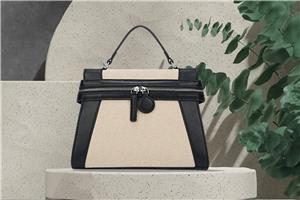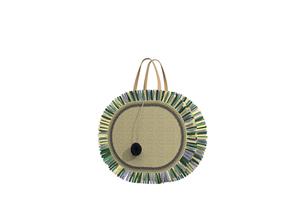Zero Waste Fashion: Simple Changes for a Greener Lifestyle
Zero Waste Fashion: Simple Changes for a Greener Lifestyle

The fashion industry is undergoing a significant transformation as consumers become increasingly aware of its environmental impact. Zero waste fashion, a concept that aims to minimize textile waste and promote sustainable practices, is gaining traction as a solution to the problems caused by fast fashion. This approach has an influence on every aspect of the clothing lifecycle, from design and production to consumption and disposal, encouraging a shift towards a more circular economy in the fashion world.
To embrace zero waste fashion, individuals can make simple changes in their shopping habits and wardrobe management. This article explores strategies to build a sustainable wardrobe, including tips on choosing sustainable materials and supporting slow fashion brands. It also delves into smart shopping techniques to reduce waste, ways to extend the life of clothing through proper care and repair, and options for responsible disposal such as recycling and clothing donation. By adopting these practices, consumers can play a crucial role in promoting a greener lifestyle and a more sustainable fashion industry.
Understanding Zero Waste Fashion
Zero waste fashion is a design and consumption philosophy that aims to create clothing through processes that generate no textile waste. This approach challenges the traditional linear model of the fashion industry, where a significant portion of materials ends up discarded. According to the Ellen MacArthur Foundation, about 87% of the total fiber input used for clothing is discarded, equivalent to a garbage truck of textiles being dumped every second.
The principles of zero waste fashion involve reimagining manufacturing processes to minimize material scraps and repurpose any waste generated back into the production cycle. This approach aligns with the concept of a circular economy, where materials are kept in use for as long as possible, reducing the overall environmental impact of the fashion industry.
The environmental impact of fast fashion is profound and deeply concerning. The rapidly growing industry contributes to approximately 20% of global wastewater and 10% of global carbon emissions, making it one of the most significant contributors to environmental pollution. The throwaway culture perpetuated by fast fashion results in an alarming increase in textile waste, with nearly 92 million tons discarded annually.
Fast fashion's detrimental effects extend beyond waste generation. The industry is responsible for 20% of global waste water, with dyeing and finishing processes contributing to 3% of global CO2 emissions and over 20% of global water pollution. Moreover, it takes an astonishing 20,000 liters of water to produce just one kilogram of cotton.
In contrast, zero waste fashion offers numerous benefits. By eliminating textile waste, it reduces the burden on landfills and minimizes the industry's carbon footprint. This approach often results in the creation of unique, one-of-a-kind pieces that are both stylish and sustainable. Zero waste practices can lead to more efficient production processes, potentially saving money by using less fabric to create the same number of garments.
Furthermore, zero waste fashion encourages innovation in design and production methods. It challenges traditional approaches and promotes the development of more eco-friendly and ethical fashion choices. By adopting sustainable materials and clean manufacturing processes, zero waste fashion contributes to a significant reduction in the fashion industry's environmental impact.
Building a Sustainable Wardrobe
Building a sustainable wardrobe is a crucial step in embracing zero waste fashion and moving away from the harmful effects of fast fashion. This process involves thoughtful consideration of one's current closet, adopting a minimalist approach, and prioritizing quality over quantity.
Assessing your current closet
The first step in creating a sustainable wardrobe is to evaluate what you already own. This closet audit allows you to reflect on your personal style and identify items that align with your values and sustainability goals. Sort your clothing into three categories: keep, donate/sell, and recycle/toss. Retain only the pieces that fit well, are in good condition, and reflect your personal style. This process helps you become more aware of your clothing consumption and waste, setting the foundation for a more ethical closet.
When assessing your wardrobe, pay attention to the materials of your garments. Look for items made from eco-friendly fabrics like organic cotton, recycled polyester, or bamboo. These materials have a lower environmental impact compared to conventional ones. By identifying gaps in your wardrobe, you can make informed decisions about future purchases that align with sustainable fashion principles.
Adopting a minimalist approach
Minimalism in fashion isn't about limiting your wardrobe to black and white items or adhering to a strict number of pieces. Instead, it's a philosophy that encourages simplifying your style and investing in timeless pieces that truly reflect your personality. This approach helps reduce consumption and promotes a more circular economy in the fashion world.
One effective strategy is to create a capsule wardrobe, which involves building a collection of versatile, high-quality pieces that can be mixed and matched to create various outfits. This minimizes the need for constant purchases and helps you focus on items that bring joy and value to your life. Remember, there's no magic number of clothing items to achieve a minimalist wardrobe – it's about fine-tuning your personal style and eliminating excess.
Choosing quality over quantity
Investing in high-quality, durable pieces is a cornerstone of sustainable fashion. While these items may have a higher upfront cost, they often prove more economical in the long run due to their longevity. High-quality garments are typically made with better materials and construction, ensuring they withstand the test of time and reduce the need for frequent replacements.
When shopping for new items, consider the cost per wear rather than just the price tag. For example, a fast fashion dress bought for £20 and worn twice has a cost per wear of £10. In contrast, a quality dress costing £150, worn 12 times a year for six years, has a cost per wear of only £2.08. This approach not only saves money over time but also reduces textile waste and supports more ethical production practices.
By focusing on quality, adopting a minimalist approach, and carefully assessing your current wardrobe, you can create a sustainable closet that aligns with your values and contributes to a more environmentally friendly fashion industry.
Shopping Strategies for Zero Waste Fashion
Adopting zero waste fashion practices involves making thoughtful choices when shopping for clothing. By implementing specific strategies, consumers can contribute to a more sustainable fashion industry while building a wardrobe that aligns with their values.
Buying secondhand and vintage
One of the most effective ways to embrace zero waste fashion is by purchasing secondhand and vintage clothing. This approach not only reduces the demand for new garments but also keeps functional items out of landfills. Thrift stores offer a wide variety of clothing options at affordable prices, making it easier for consumers to experiment with their style without contributing to the fast fashion cycle.
When thrifting, it's essential to have a plan. Researching good thrift stores in the area and creating a list or mood board of specific pieces to source can help streamline the shopping process. This approach can cut down on mindless rack searching and reduce the likelihood of impulse purchases.
Supporting sustainable brands
While thrifting is an excellent option, supporting sustainable brands is another crucial aspect of zero waste fashion. These brands often focus on using eco-friendly materials, implementing ethical production practices, and minimizing their environmental impact. When choosing sustainable brands, look for those that prioritize worker safety, fair wages, and responsible resource management.
It's important to note that sustainability goes beyond just the materials used. A truly responsible brand considers its impact on people, the planet, and animals. This includes policies on child labor, forced labor, and the right to join unions. Additionally, sustainable brands often work to reduce their carbon emissions and safely manage chemical use and disposal.
Avoiding impulse purchases
One of the biggest challenges in adopting zero waste fashion is resisting the urge to make impulse purchases. Fast fashion brands often influence consumers by making trendy clothes affordable and readily available. However, these impulse buys can lead to overconsumption and contribute to the growing problem of textile waste.
To avoid impulse purchases, it's helpful to define a budget before shopping and stick to it. This can help weed out items that aren't necessary and cut down on overconsumption. Additionally, asking yourself questions like "Do I already have something similar?" or "Can I find this item secondhand?" can guide you in making more thoughtful purchases.
Remember, the goal of zero waste fashion is not to deprive yourself but to make more conscious choices. If you find an item you truly love and know you'll wear for years to come, it can be a worthwhile purchase. The key is to focus on quality over quantity and to consider the long-term value of each item you add to your wardrobe.
By implementing these shopping strategies – buying secondhand, supporting sustainable brands, and avoiding impulse purchases – consumers can play a significant role in promoting zero waste fashion and contributing to a more circular economy in the fashion industry.
Maintaining and Extending the Life of Your Clothes
Proper care and washing techniques
To extend the life of your clothes and contribute to zero waste fashion, it's crucial to adopt proper care and washing techniques. One of the most effective ways to maintain your garments is to wash them less frequently. Many items, especially those worn further from the skin, can be worn multiple times before needing a wash. This approach not only saves water and energy but also helps preserve the fabric's integrity.
When washing is necessary, opt for cold water settings. Hot water can dull vibrant colors and weaken fabrics faster than you might think. Using cooler washes not only helps your outfits keep their shape and shade but also aligns with sustainable fashion practices. It's also advisable to turn clothes inside out before washing, as this simple act protects the visible side of your garments from friction and direct exposure to detergents.
Avoid using fabric softeners, as they can make clothing wear out faster and contribute to environmental pollution. Instead, consider using eco-friendly detergents that are biodegradable and free from harmful chemicals. These gentler options are better for both your clothes and the planet.
Repairing and upcycling
Embracing the art of repair is a key aspect of sustainable fashion. Learning basic mending skills can significantly extend the life of your clothes. Simple repairs like sewing on buttons, fixing loose hems, or patching small holes can prevent minor issues from becoming major problems. For those new to mending, there are numerous online resources and tutorials available to help you get started.
Consider exploring the concept of "visible mending," which involves repairing holes and signs of wear in bold, obvious ways. This technique, inspired by the Japanese Sashiko practice, not only fixes damage but also adds character to your garments. By embracing imperfections, you can transform a flaw into a unique design feature.
Upcycling is another creative way to breathe new life into old clothes. This process involves transforming unwanted garments into new, functional items. For example, old t-shirts can become cleaning rags, while worn-out jeans can be repurposed into stylish shorts or unique accessories. By repurposing clothes, you're not only extending their usefulness but also reducing the demand for new production.
Responsible disposal methods
When clothes truly reach the end of their wearable life, it's important to dispose of them responsibly. Textile recycling is a crucial element of zero waste fashion. Many brands and organizations offer recycling programs that ensure even worn-out garments can be repurposed. Look for textile recycling bins in your community or check if local retailers have take-back programs.
However, it's essential to understand the limitations of current textile recycling technologies. According to a 2022 study, in the United States, 85% of textiles end up in landfills or are incinerated. Less than 1% of discarded clothing is actually recycled into new garments through closed-loop recycling. This highlights the importance of extending the life of our clothes as much as possible before considering disposal.
By adopting these practices – proper care, repairing, upcycling, and responsible disposal – we can significantly reduce textile waste and move towards a more circular economy in fashion. These small changes in our habits can have a substantial impact on reducing the environmental footprint of our wardrobes.
Conclusion
Zero waste fashion represents a significant shift in how we approach clothing, from production to consumption and disposal. By adopting sustainable shopping strategies, maintaining our garments properly, and finding creative ways to extend their life, we can play a crucial role in reducing the fashion industry's environmental impact. These simple changes not only contribute to a greener lifestyle but also often result in a more thoughtful and satisfying relationship with our wardrobes.
To wrap up, the journey towards zero waste fashion is ongoing and requires consistent effort and mindfulness. However, the benefits – both personal and environmental – make it a worthwhile pursuit. As consumers become more aware and make conscious choices, they can drive positive change in the fashion industry, pushing for more sustainable practices and innovative solutions to minimize waste. This collective effort has the potential to transform the fashion landscape, creating a more sustainable and circular future for the industry.
FAQs
What are the strategies used in zero waste fashion design?
Zero waste fashion involves employing innovative design strategies that maximize the use of fabric. This includes pattern tessellation and strategic cutting to avoid fabric waste. Designers also create garments that are adjustable or multifunctional, further ensuring that no fabric goes to waste during the production process.
Can you outline the five principles of a zero waste lifestyle?
The five principles of a zero waste lifestyle, often referred to as the 5 R's, are: Refuse what you do not need; reduce what you do need; reuse what you consume; recycle what you cannot refuse, reduce, or reuse; and rot (compost) the rest, as advocated by Bea Johnson.
How can the fashion industry become more environmentally friendly?
To make fashion more eco-friendly, prioritize clothing made from natural fibers like cotton, linen, bamboo, flax, jute, silk, wool, and alpaca over synthetic ones. Opt for low-impact materials such as Modal and Lyocell, and avoid fabrics like polyester, nylon, spandex, and acrylic, which are less sustainable.
What does a sustainable fashion green strategy entail?
A sustainable fashion green strategy involves the production, marketing, and use of clothing, shoes, and accessories in a manner that is as sustainable as possible. This approach considers both environmental and socio-economic aspects to minimize the impact on the planet while ensuring fair practices in the industry.




